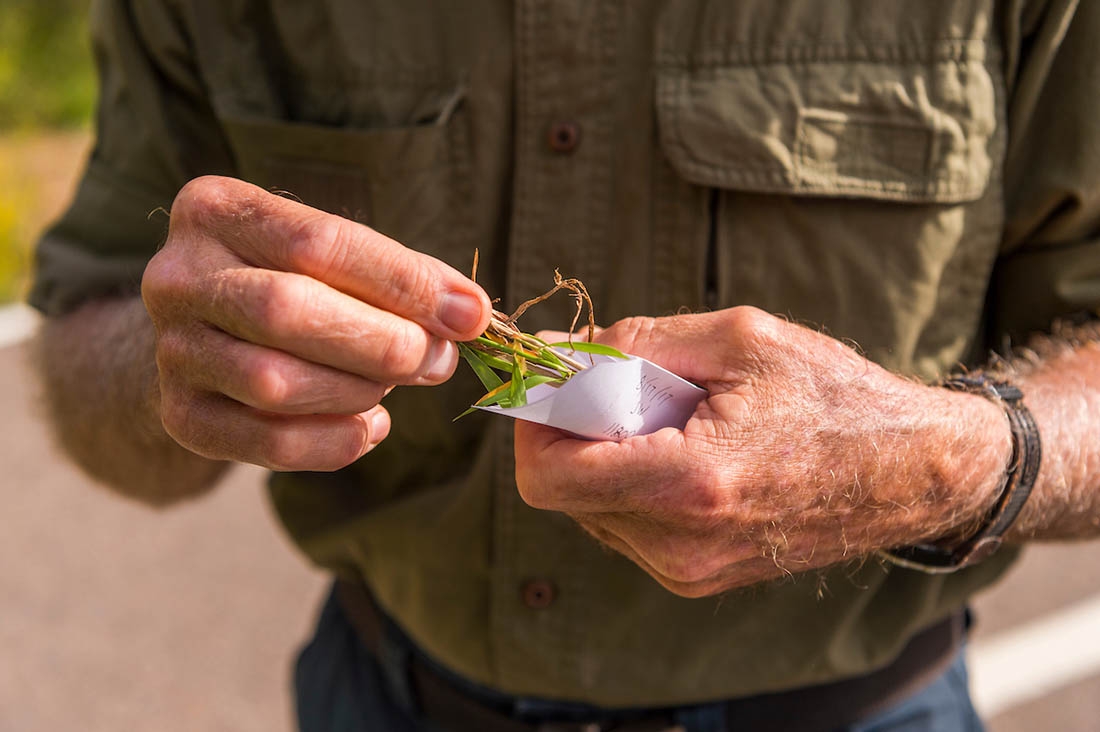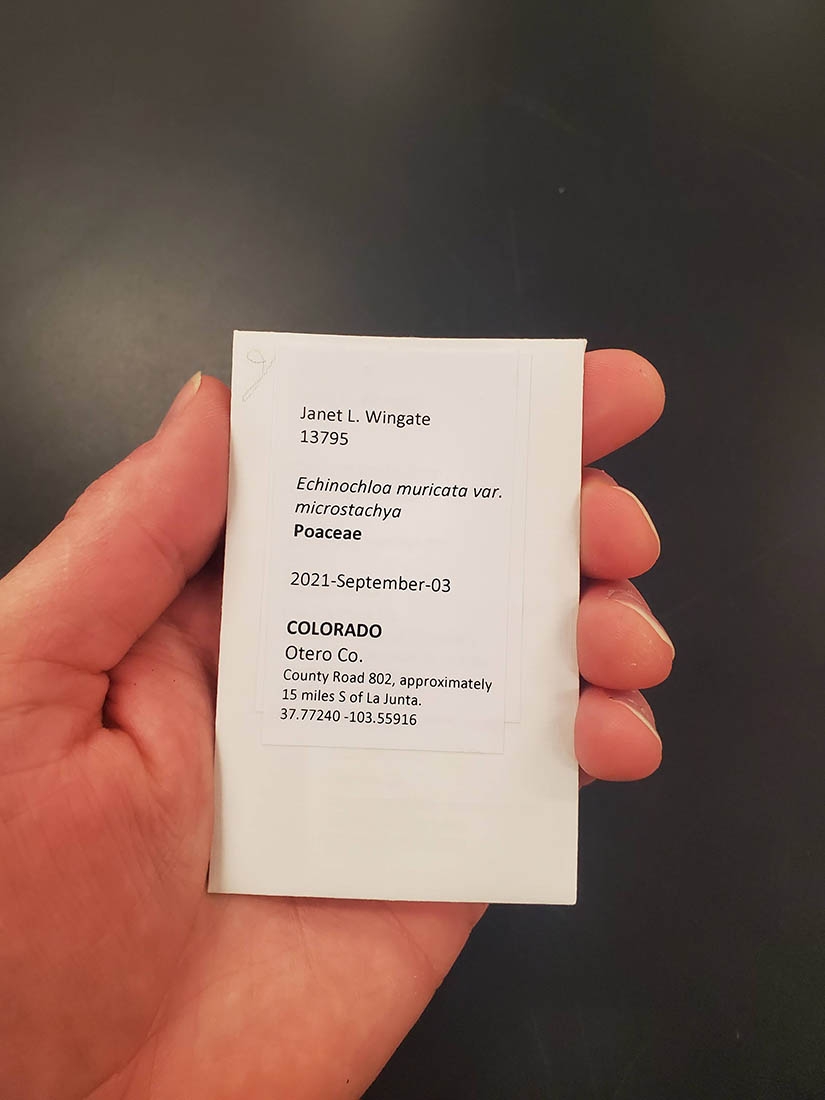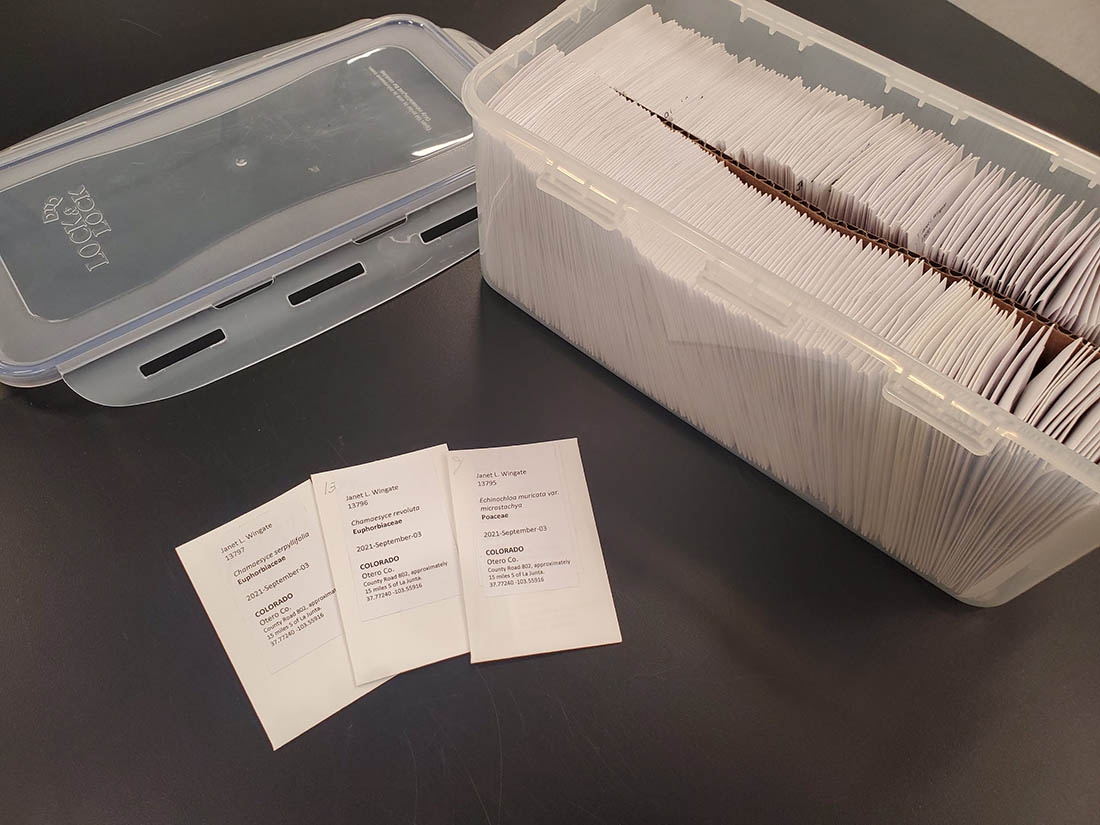Denver Botanic Gardens’ Plant Tissue Biobank
DNA contains the information that can help create a plan for conserving populations of rare plants in decline, inform strategies for restoring degraded ecosystems, identify species, describe new species or decide that what were once considered multiple species should really only be one. Denver Botanic Gardens conducts genetic research investigating all these topics, and to aid in doing so we have a plant tissue biobank. Formalized in 2016, our biobank currently contains over 12,000 samples. Each sample consists of a piece of leaf the size of a quarter or larger tucked into a coin envelope labeled with the taxon, collection date, location and collector.
The majority of these samples were collected contemporaneously with plant specimens that are bound for the herbarium. Specimens in the herbarium are meant to be a representation of a plant at a particular place and time, and to be kept in good condition for a minimum of 300 years. Scientists can destructively sample herbarium specimens to obtain genetic material for analysis in the lab, but this must be done very carefully and sparingly. Having a separate tissue sample collected from the same individual negates this. Additionally, tissue samples are quickly dried at the time of collection using silica gel which better preserves DNA, allowing scientists to sequence the entire genome of a plant.
We also collect and keep tissue samples when studying the genetic variation within and among populations of rare plants in Colorado, such as Astragalus microcymbus, the skiff milkvetch. Results from these studies guide conservation strategies and decisions, as well as contribute to our understanding of what makes species rare or susceptible to environmental changes.
To encourage botanical and ecological research, tissue samples are made available to the scientific community for use in their studies. This is achieved through the Global Genome Biodiversity Network, a sort of marketplace where museums, gardens, and academic labs list their samples that can be requested and used by scientists and students across the globe.
Gallery



Add new comment